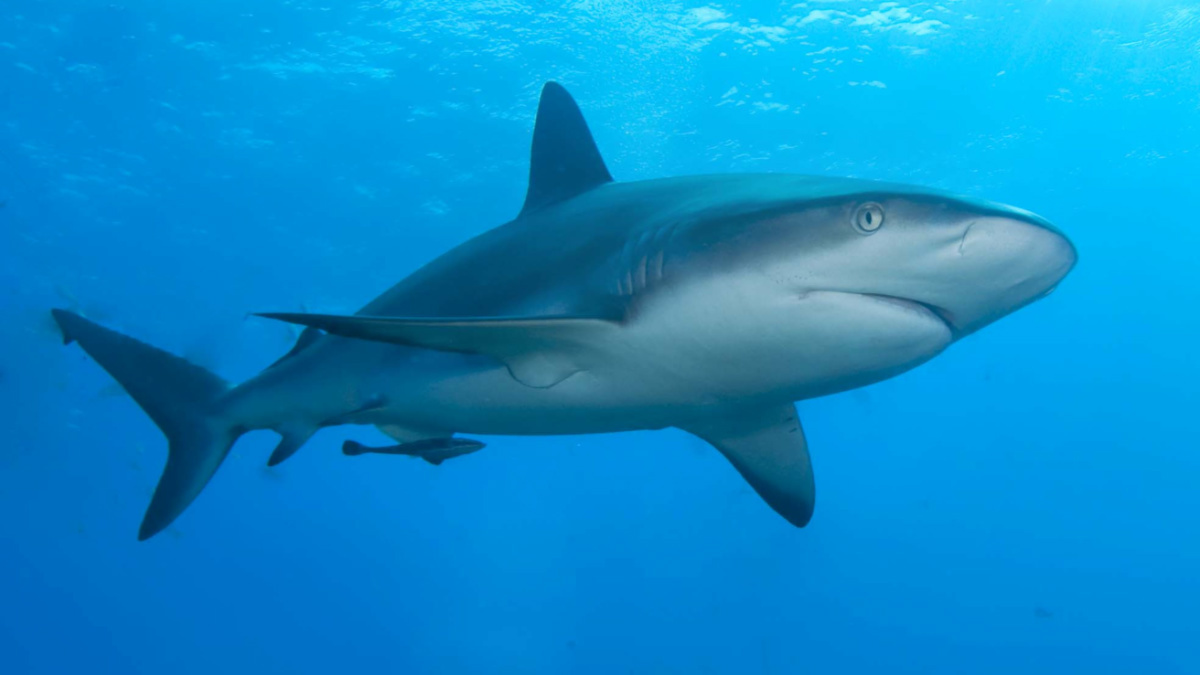

There are hundreds of species of sharks in the world, and they have been around since before the dinosaurs. Albert kok / Wikimedia Commons / CC by 3.0
Every day, sharks suffer from different threats. Up to 100 million sharks disappear every year, due to destructive fishing by humans and the impact of climate breakdown. One-third of the world’s known shark species have been listed as “threatened” species by the International Union for Conservation of Nature.
We need to talk about them, because the ocean desperately needs sharks! After 400 million years of evolution, sharks are incredible creatures—master hunters with incredible precision. Sitting at the top of the food chain, they’re central to maintaining the balance of marine ecosystems.
There are hundreds of species of sharks in the world, and they have been around since before the dinosaurs. Despite their fearsome Hollywood reputation, they are some of the most amazing animals on the planet.
1. Many sharks lay eggs, but some give birth to live young, just like we do. Shark pregnancies can last from a few months to well over a couple of years. That’s longer than whales or elephants!

This whale shark smiles for the camera in the warm water off the coast of the Philippines. Greenpeace
2. Sharks come in all shapes and sizes, from the tiny lantern sharks, which are about the size of your hand, to giant whale sharks, which are about the same size as a bus.

A former fisherman, now a whale shark guide, hand feeds a whale shark as a tourist takes an underwater photo, Tan-awan, Oslob Cebu. Greenpeace
3. Greenland sharks, which live in cold polar waters, hold the record as the oldest known vertebrate animals on the planet. Since they are estimated to live as long as 500 years, there could be some alive today that were born in the Middle Ages. For reference, Leonardo Da Vinci painted the Mona Lisa 500 years ago!

An oceanic whitetip shark in Egypt. Greenpeace
4. Mako sharks hold the record for being the most athletic sharks, reaching swimming speeds of over 40 miles per hour! They are also known to have jumped as much as 30 feet out of the water.

A whale shark photographed from above in Cenderawasih Bay National Park, Indonesia. Greenpeace
5. The world’s biggest sharks also have the widest mouths and eat only tiny ocean plankton, just like the largest whales.

A whale shark in the Philippines. Greenpeace
6. Carpet sharks live on the ocean floor and have elaborate patterns to blend in with perfect camouflage. The Tasseled Wobbegong shark takes this to the extreme, with a fringe of feathery ‘tassels’ around its body.

Lemon shark and other fish underwater at Tuamotus, French Polynesian. Greenpeace
8. Hammerhead sharks’ elongated heads not only give them super-sense when it comes to electromagnetic detection, but they also have almost 360-degree surround vision.

A Blue Shark (Prionace glauca) near the Azores. Greenpeace
9. When sharks are turned upside down, they go into a natural suspended state called tonic immobility.

A shark is seen in the Republic of Palau. Greenpeace
10. It’s dark in the deep sea, so tiny lantern sharks have developed their own way to glow in the dark. It’s not yet known if this is to find food, find each other, or help avoid being eaten!

Grey Reef Sharks in Tahiti. Greenpeace
In June 2019, the Greenpeace ship Esperanza went to the North Atlantic to confront the overfishing of sharks. At the same time, Greenpeace International issued a report, Sharks Under Attack: Overfished and under-protected. It proposed a solution: secure a strong Global Ocean Treaty at the UN.
Reposted with permission from Greenpeace.
- Does 'Shark Week' Do More Damage Than Good? - EcoWatch
- Starbucks Urged to Cut Ties With Hong Kong Chain That Still Serves ...
- Maine Woman Is Killed in Possible Shark Attack - EcoWatch
- Sharks Are Widely Misunderstood - EcoWatch
- Scientists Photograph Largest Glow-in-the-Dark Shark for First Time - EcoWatch

 233k
233k  41k
41k  Subscribe
Subscribe 